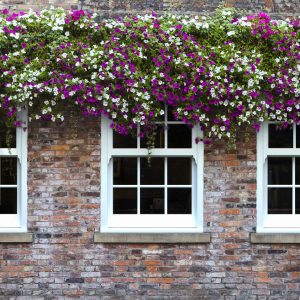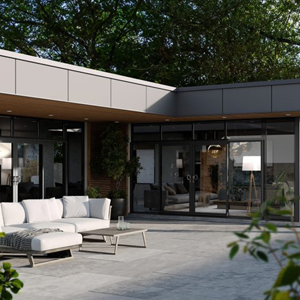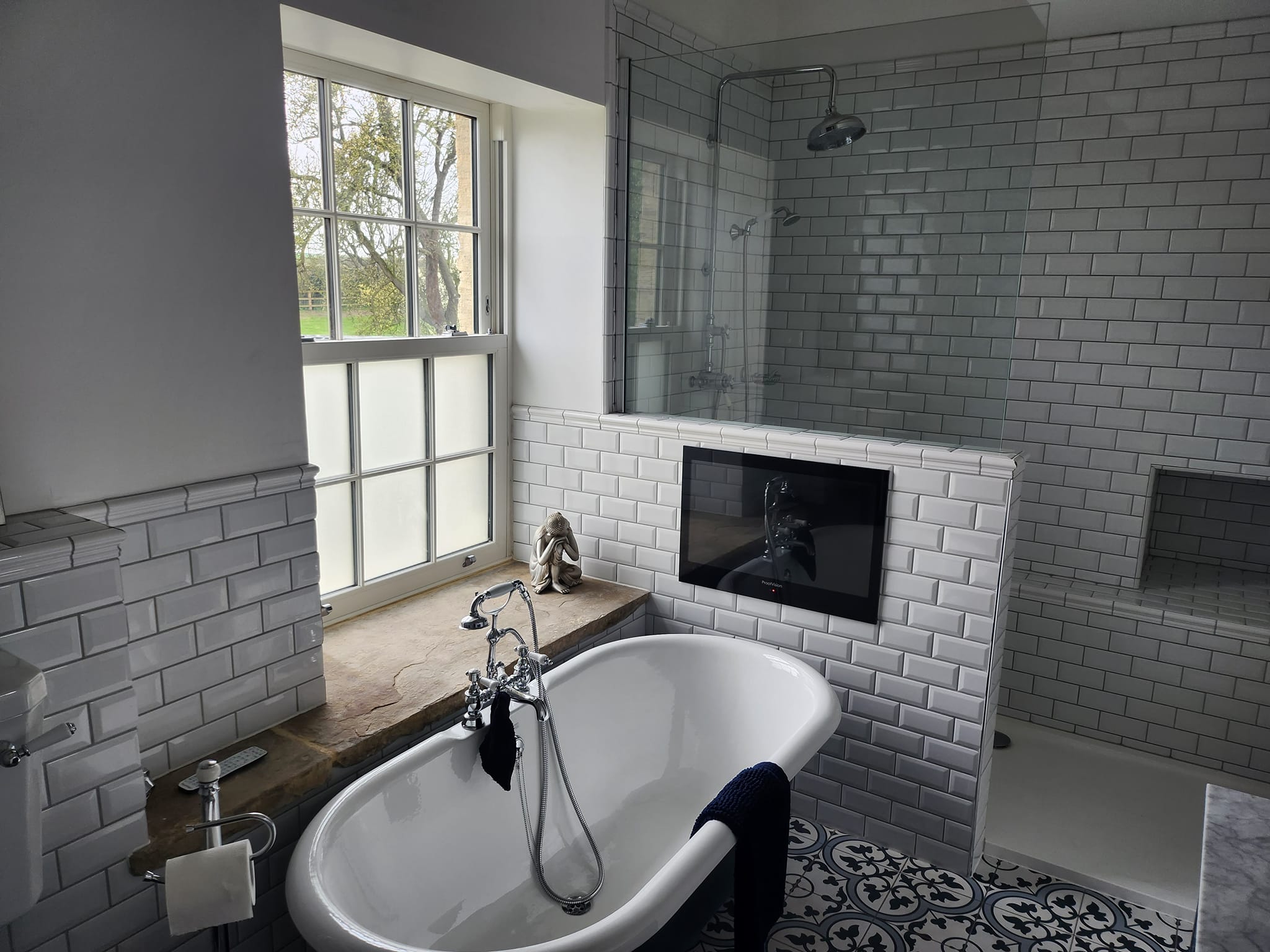Understanding the Difference Between Frosted and Obscure Glass
Share this story!
Share this post to any popular social media, email it to a friend or print it off.
If you’re planning a renovation or choosing glazing for a new project, you’ll likely come across the terms frosted glass and obscure glass. At first glance, they seem interchangeable – they both provide privacy while allowing natural light through. But there’s more to the story.
In this blog post, we’ll break down the difference between frosted and obscure glass, explain how they’re made, and help you choose the right option for your project.
What Is Obscured Glass Called?
Obscure glass is a broad term used to describe any type of glazing that limits visibility while still transmitting light. Depending on its appearance or production method, obscure glass may also be referred to as:
- Privacy glass
- Textured glass
- Patterned glass
- Frosted glass
- Opaque glass
Each of these terms relates to the level of obscurity or design in the glass, but all serve the same purpose: letting in light while blocking the view. Whether you’re looking for bathroom window privacy or a stylish glass option for your front door, obscure glass offers a practical and attractive solution for any home.
How Is Obscure Glass Made?
Obscure glass is created by altering the surface or structure of clear glass using different techniques. The most common methods include:
Etching
Etched glass is made by applying acid to the glass surface. This creates a uniform, frosted finish that diffuses light and offers privacy. Etching can be used to create custom patterns or borders for a decorative touch.
Sandblasting
Sandblasting uses high-pressure abrasives to roughen the glass, giving it a matte, textured look. It’s slightly more tactile than etched glass and can produce detailed designs or full coverage for maximum obscurity.
Rolled or Patterned Glass
Another method involves rolling a patterned design into the glass during manufacturing while it’s still semi-molten. This process creates patterned glass with a wide range of designs, from florals to geometric lines.
These methods offer various levels of obscurity and are the foundation for many different types of obscure glass.
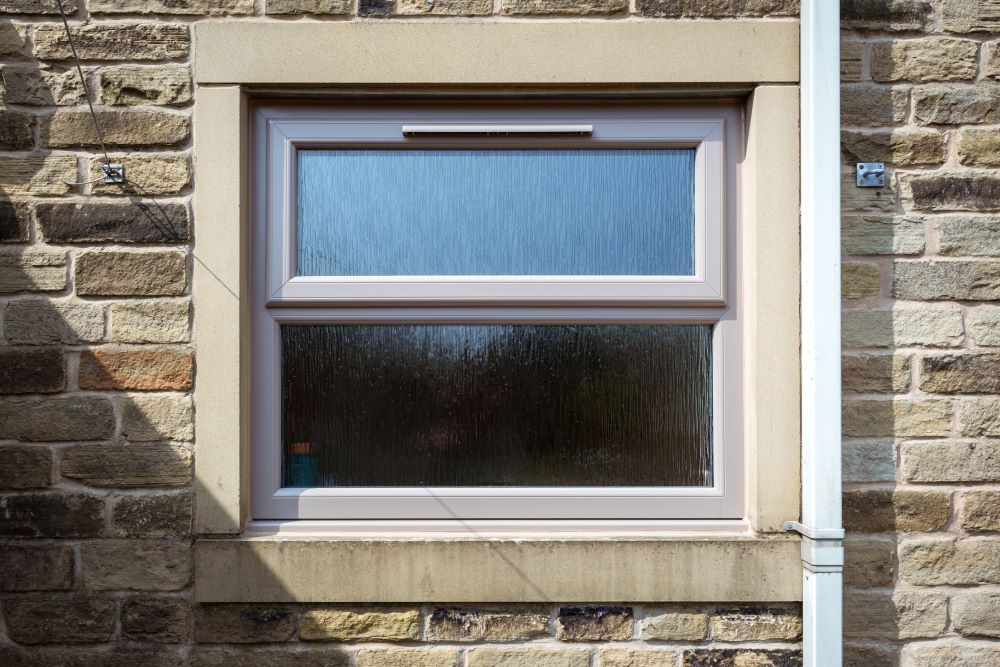
Grades of Obscure Glass: How Much Privacy Do You Need?
Obscure glass comes in a range of privacy levels, typically graded from 1 to 5:
- Grade 1: Offers the least obscurity. Ideal for decorative features where privacy isn’t a major concern.
- Grade 3: A medium level of privacy. Common for interior glass doors and home offices.
- Grade 5: Maximum privacy. Perfect for bathroom window glass, cloakrooms, and obscure glass doors for bathrooms.
When selecting your glass, consider both your design preference and the privacy level needed for the space.
Styles of Obscure Glass
Choosing the right type of obscure glass comes down to style and functionality. The styles we offer include:
- Satin Glass (Level 5 Obscurity): Satin glass offers the highest level of privacy with a smooth, silk-like finish. Its soft, frosted appearance diffuses light beautifully, making it ideal for bathrooms, cloakrooms, or any space where full discretion is essential.
- Bark Glass (Level 5 Obscurity): With a deeply textured surface resembling tree bark (hence the name), this glass provides maximum privacy and a distinctive, organic look. It’s a great choice for spaces requiring total obscurity without sacrificing style.
- Stipple Glass (Level 4 Obscurity): Stipple glass features a finely textured surface that scatters light while providing strong visual distortion. It delivers excellent privacy with a decorative touch, commonly used in bathrooms and front door panels.
- Contour Glass (Level 3 Obscurity): Contour glass has a wavy, flowing texture that softens visibility and gives a modern, fluid feel to any glazing. Its medium obscurity level is ideal for internal doors or decorative panels.
- Leaf Glass (Level 3 Obscurity): Leaf glass incorporates an elegant natural pattern that partially distorts the view, offering moderate privacy. It brings a touch of nature indoors and works well in hallways, garden rooms, or conservatories.
- Westminster Glass (Level 2 Obscurity): Westminster glass has a traditional, geometric pattern that adds subtle character to a space while still allowing partial visibility. It’s suitable for interior doors or areas where a balance between light and light privacy is preferred.
These styles can be used across various applications, depending on how much privacy you need and the overall aesthetic you’re aiming for.
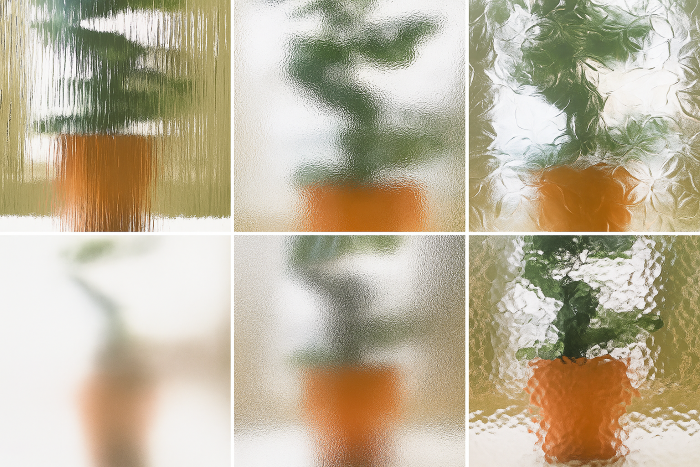
What Is Obscure Glass Used For?
Thanks to its versatility, obscure glass is widely used in both residential and commercial settings, both indoors and outdoors.
Residential Uses
- Bathroom Windows: One of the most common uses for obscure glass. It provides privacy without the need for blinds or curtains.
- Front Doors: Add curb appeal while preventing outsiders from seeing in.
- Internal Doors: Great for home offices or en-suite bathrooms where you want separation but not darkness. Our AluSpace internal doors are designed for interior use, and look great with obscure glass to separate a room.
- Kitchen Cabinets & Pantries: Add a stylish, semi-private look.
Commercial Uses
- Office Partitions: Ideal for meeting rooms or breakout areas.
- Reception Areas: Keeps things open and light-filled while maintaining discretion.
- Washrooms: Essential for privacy in shared spaces.
The benefits of obscure glass include:
- Enhanced privacy
- Improved natural light flow
- Reduced glare
- Decorative appeal
Is Obscure Glass the Same as Frosted Glass?
While the terms are sometimes used interchangeably, there is a clear difference between frosted glass and obscure glass.
- Frosted glass is a type of obscure glass, achieved through sandblasting or acid etching.
- Obscure glass includes a broader range of styles – like patterned, reeded, and textured glass – offering various levels of privacy and design.
In essence, all frosted glass is obscure, but not all obscure glass is frosted.
Is Frosted Glass Enough for Privacy?
A common question is: Can you see through frosted glass?
Generally, the answer is no – at least not clearly. Frosted glass diffuses light and visibility, preventing clear views from either side. From a distance, even shadows and outlines are hard to distinguish. That makes a frosted glass window an excellent choice for areas requiring privacy, like:
- Bathrooms
- En-suites
- Internal doors
- Front door panels
For even greater privacy, you could combine frosted glass with a blind or curtain, though in many cases, the frosted effect alone is more than sufficient.
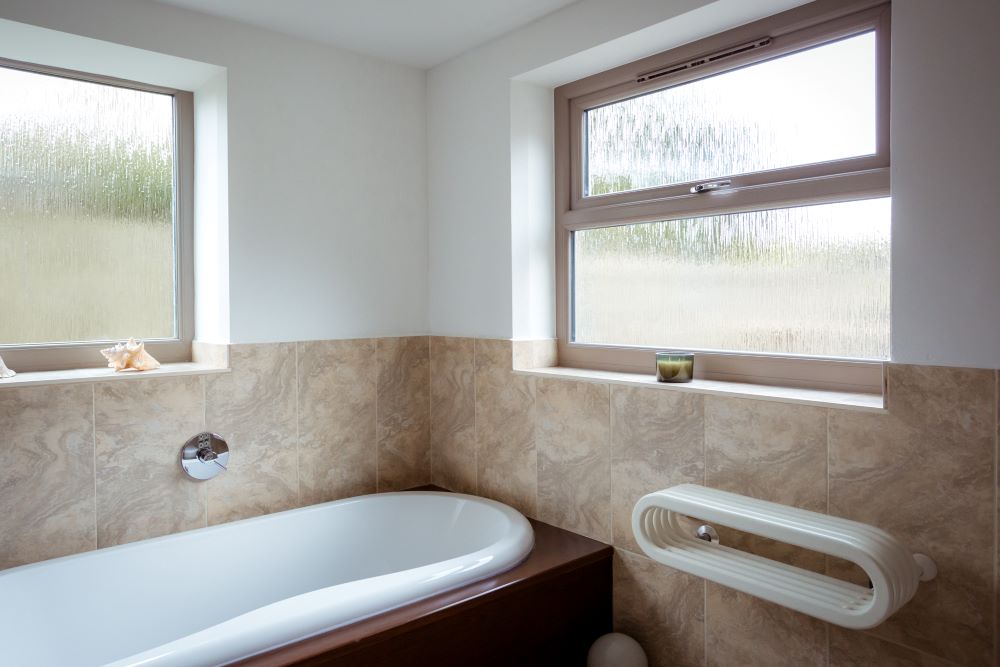
What Is the Most Popular Obscure Glass?
Right now, satin obscure glass is the most popular obscure glass pattern thanks to its smooth finish and subtle, modern look. It pairs beautifully with both contemporary and traditional design schemes.
Other modern obscure glass patterns currently trending include:
- Stipple glass: Clean, modern, and perfect for minimalist interiors.
- Geometric patterns: Ideal for statement pieces or art deco-inspired homes.
- Classic nature motifs: Still a top choice for period properties.
If you’re looking to update a space with light, privacy, and style, choosing an obscure glass pattern for your décor can add that finishing touch.
Final Thoughts
Whether you’re upgrading a bathroom window, replacing your front door glass, or designing a stylish office space, obscure and frosted glass are excellent solutions that combine function and design.
The key takeaway? Frosted glass is just one option in the broader category of obscure glass, which includes a whole world of textures, patterns, and privacy levels to choose from.
So, next time you’re browsing privacy glass windows, don’t just stop at frosted – explore all your options to find the perfect balance of light, privacy, and style.
Need help choosing the right glass for your project?
Get in touch with our team today, or explore our full range of patterned and obscure glass options online.

You May Also Be Interested In:
- How To Clean uPVC Sliding Sash Windows
- 7-Step Guide: How to Adjust Your uPVC Windows
- Understanding Energy Efficiency
- 2022 Changes to Building Regulations for Doors and Windows
- Will Quickslide Sliding Sash Windows Withstand Draughts and Leaks?
- We’ll see you at the Glazing Summit! - 2 October 2025
- Guide to Different Types of Windows for Your Home - 11 September 2025
- Double vs Triple Glazing: Which Is Better for Your Home? - 6 August 2025
Please note, our news articles are relevant and accurate at the time of release, but as technical developments dictate, and times goes by the information in this article may no longer be applicable. If you have questions, please contact us using our online contact form or call us on 03332 412 240.

